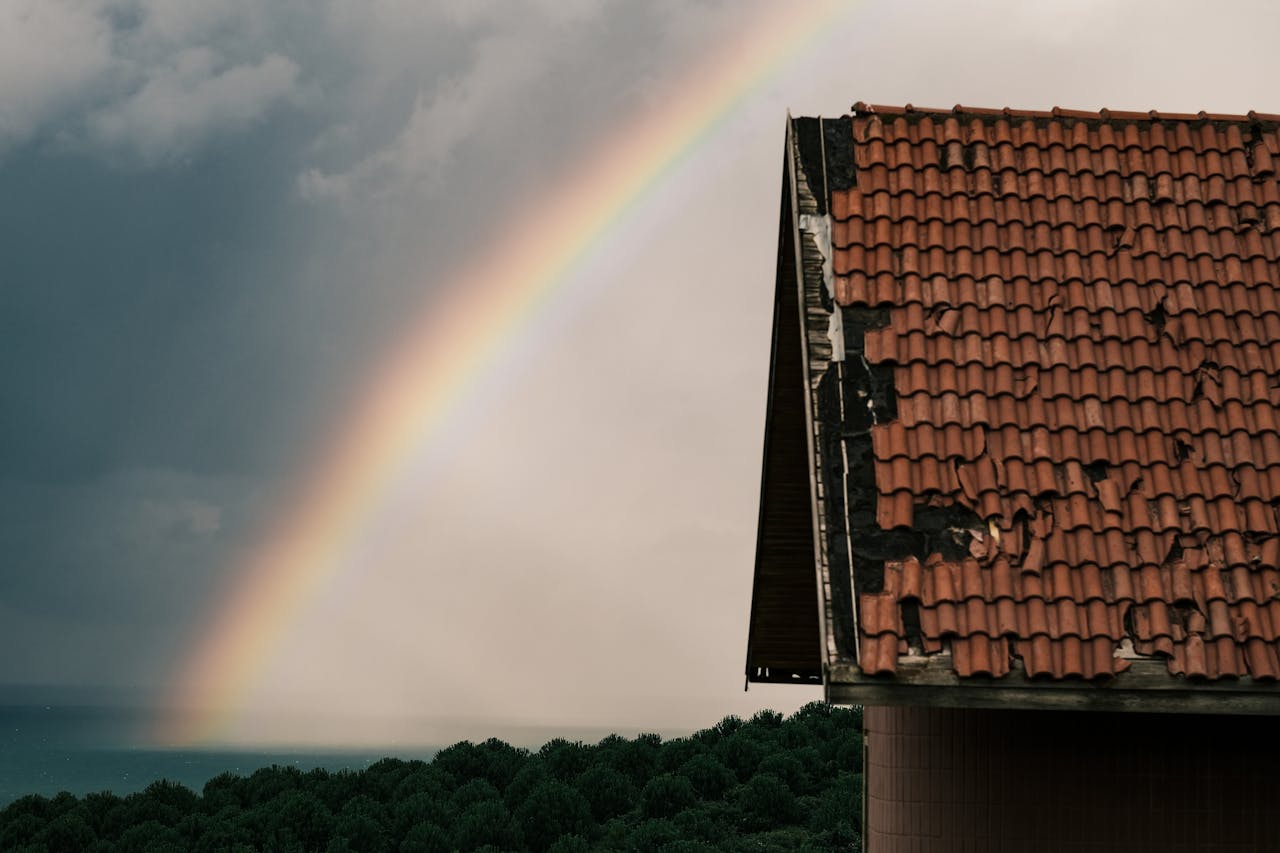When hail rattles your roof during a storm, it can be more than just a noisy nuisance. Hailstones can wreak havoc on your roof without you even realizing it. Imagine waking up after a storm, sipping your morning coffee, and peering outside to see the aftermath. Often, homeowners in Rapid City might overlook roof damage from hail, thinking everything appears intact from a distance. But those small ice pellets can cause significant issues that aren’t always visible without a closer look.
Knowing what hail can do to your roof is like being one step ahead. It equips you with the knowledge to act swiftly and potentially save on high repair costs down the line. Inspecting for hail damage is essential to maintaining your home’s defenses, but understanding what harm hailstones can inflict is the first step toward protecting your property.
Understanding the Impact of Hail on Your Roof
Hail can hit different types of roofing materials in ways you might not expect. Imagine you’ve got a shingles or metal roof; both have their own vulnerabilities. While metal roofs can seem more resilient, larger hailstones can dent and compromise the protective coating, leading to potential rust over time. Shingle roofs, on the other hand, often experience bruising that doesn’t immediately pop out but, when left unattended, can lead to a cascade of problems like leaks and water damage.
Every type of roofing material reacts differently under hail’s assault. Shingles can lose granules, which may not seem like a big deal at first. But, those granules are crucial for protecting your roof from the sun’s rays and harsh weather, ultimately decreasing the roof’s lifespan significantly when they’re gone. Metal roofs might look mostly okay from the ground, yet closer inspection often reveals small dents and scratches that invite moisture and weaken the surface.
If you’ve been through a storm, noticing these common damage signs is essential. Look for things like surface dents from the ground and check if any granules are collecting near your gutters. This is your signal that it’s time for a thorough inspection from a professional. Staying informed about these effects can make all the difference in ensuring your roof stands strong through every season in Rapid City.
Step-by-Step Hail Damage Roof Inspection Checklist
After a storm, examining your roof from the ground isn’t enough. You’ll need to get up close and personal to catch those sneaky signs of damage. Here’s a simple checklist to guide you:
1. Check the gutters and downspouts. Look for any dents, which can indicate hail impact. Make sure there’s no blockage, as this could lead to water pooling and further damage.
2. Inspect rooftop vents, skylights, and other features like chimneys or satellite dishes. These parts can be vulnerable and often show signs of damage before shingles do.
3. Analyze your attic and ceiling for moisture. Any sign of water infiltration suggests compromised roofing material.
4. Evaluate shingle conditions by standing on the roof, if safe. Notice any bruising, cracks, or missing granules. If your roof is metal, check for dents and any scratch marks.
5. Document everything you observe. Take clear, time-stamped photos of the damage. These will be invaluable for potential insurance claims.
Once you’ve completed this checklist, you’ll have a better insight into your roof’s condition. Following a storm, it’s wise to find these trouble spots early on and take action to prevent small issues from becoming big headaches.
When to Call a Professional
Sometimes, DIY inspections can uncover damage that might seem minor to you but could lead to significant issues over time. Here are some situations where it makes sense to bring in the experts:
– If you’ve spotted any leaks or moisture inside your home, even if it’s just a small patch of dampness.
– When there are multiple dents or damage across wide areas of your roof.
– If you’re not comfortable or safe performing a detailed inspection on your own.
Finding a reliable roofing expert in Rapid City involves a few key steps. Look for someone with strong local reviews and experience in dealing with storm-related damage specific to your area. Consider asking for recommendations, and always check their credentials before committing.
Preventative Measures to Safeguard Your Roof
To keep your roof in tip-top shape and ready for Rapid City’s weather extremes, think about these proactive steps:
– Schedule regular maintenance checks to catch potential issues early.
– Consider materials that offer enhanced protection, like impact-resistant shingles, which are designed to withstand hail better.
– Timely inspections and prompt repairs preserve your roof’s life span and condition.
With these precautions in place, your roof can better resist whatever Mother Nature throws its way, ensuring peace of mind during those heavy storms.
Make Sure Your Roof is Ready for Any Weather
Routine checks and professional assessments are your allies in maintaining a durable roof. By staying on top of potential problem areas, you not only protect your home but also spare yourself from unexpected repair costs. As seasons change, so do the requirements for keeping your home safe and dry.
It’s important to act fast after storms to spot damage quickly and address it immediately. This dedication to upkeep means your roof will serve you well, no matter how the weather behaves. If you’re concerned about your roof’s integrity or potential hail damage, consult with knowledgeable experts. They can provide advice and solutions tailored to your specific needs in Rapid City, ensuring that your home remains secure and welcoming year-round.
For dependable protection and peace of mind after a storm, schedule a professional hail damage roof inspection. Let RainTite Roofing & Construction address any hidden issues quickly to help keep your Rapid City home safe and secure in every season.

